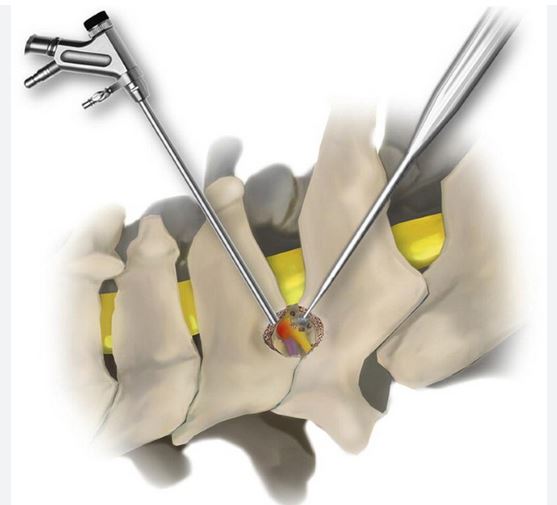Endoscopic Spine Surgery
Treatment > Minimally Invasive Spine Surgery

Endoscopic Spine Surgery
Surgical treatment of the degenerative disc disease has evolved from traditional open spine surgery to minimally invasive spine surgery including endoscopic spine surgery. Constant improvement in the imaging modality especially with introduction of the magnetic resonance imaging, it is possible to identify culprit degenerated disc segment and again with the discography it is possible to diagnose the pain generator and pathological degenerated disc very precisely and its treatment with minimally invasive approach.
With improvements in the optics, high resolution camera,
light source, high speed burr, irrigation pump etc, minimally
invasive spine surgeries can be performed with various
endoscopic techniques for lumbar, cervical and thoracic
regions.
- Advantages of endoscopic spine surgeries
Less tissue dissection and muscle trauma, reduced blood loss, less damage to the epidural blood supply and consequent epidural fibrosis and scarring, reduced hospital stay, early functional recovery and improvement in the quality of life & better cosmesis.
- Indications of endoscopic Spine Surgeries
Initially, endoscopic technique was restricted to the lumbar region but now it also can be used for cervical and thoracic disc herniations. Previously endoscopy was used for disc herniations which were contained without migration but now days it is used for highly up and down migrated disc herniations as well. Use of endoscopic technique in lumbar region was restricted to disc herniations but gradually it is also used for spinal canal stenosis and endoscopic assisted fusion surgeries.
- Types of Endoscopic Spine Surgeries
Endoscopic Spine surgeries are of different types like
1) Uniportal Interlaminal endoscopy
2) Uniportal Transforaminal Endoscopy
3) Unilateral Biportal Endoscopy (UBE)

